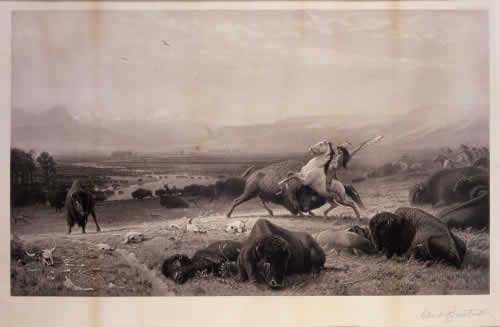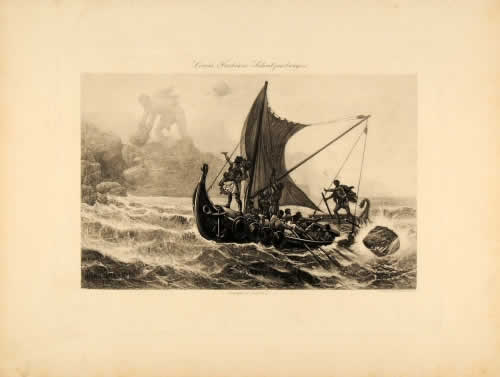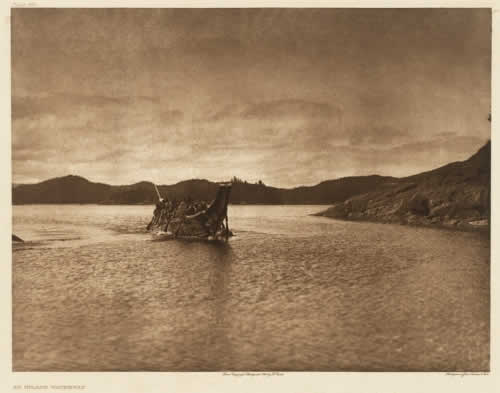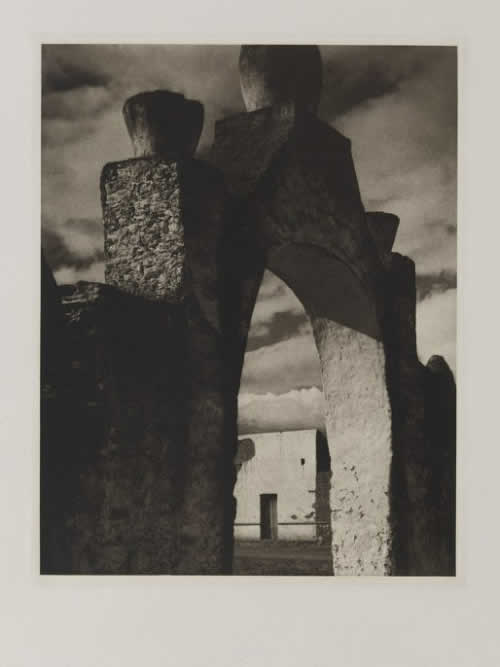Print techniques:
What is
Photogravure?
Print Appraisers can research, authenticate, and appraise your work on paper. Contact us for more information.
What is photogravure?
Photogravure is an intaglio technique used to reproduce photos. The photo negative is exposed to a copper plate. The plate is then etched and printed onto paper. Photogravure is an early method of photographic printing that started in the 1820s. The first photogravure prints were produced in France, and later in the UK. Englishman, Henry Fox Talbot, patented his photogravure process in 1852.

Albert Bierdstadt. 1888. The last of the Buffalo

Louis Schutzenberg. 1894 Ulysses Cyclops
Photogravure continued to change and develop as a process. While slight differences exist between methods, photo etchings and engraving s are generally labeled as photogravure. Other terms used to describe such prints include rotogravure and heliogravure.
Photogravure was slowly out-phased by easier and less toxic, photo printing methods. While modern printing has made photogravure nearly obsolete, printshops still produce a limited number of photogravure, fine art prints each year.

Edward Sheriff Curtis.1914. An Inland waterway, North American Indian Portfolio. RISD Museum

Paul Strand. 1933. Gateway Hidalgo. The Mexican Portfolio
